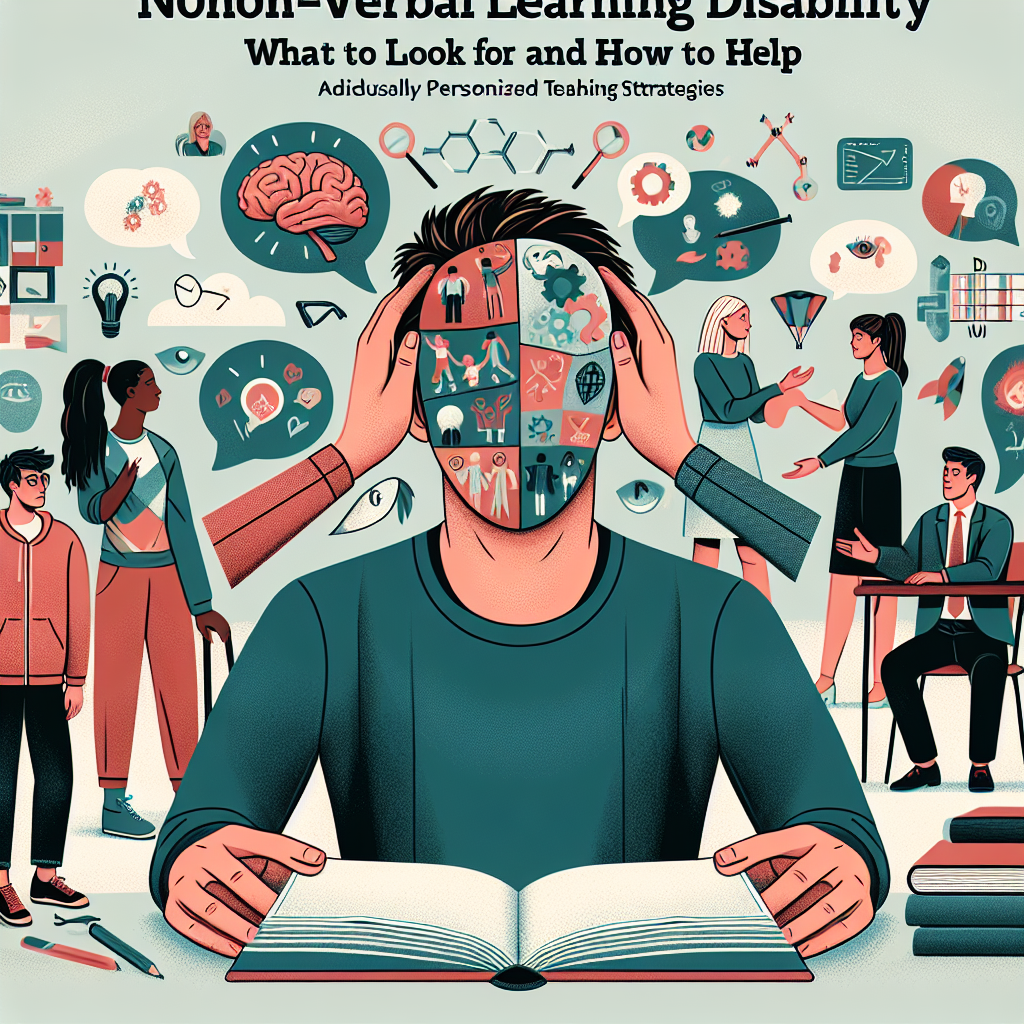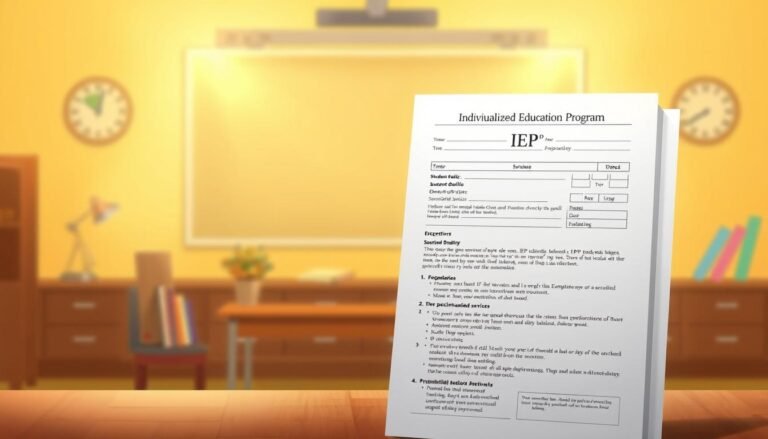
Breaking Down NVLD: What to Look For and How to Help – The Ultimate Guide
Introduction
In a world that values adaptability and quick thinking, many individuals struggle to navigate social cues and pragmatic problem-solving. Non-Verbal Learning Disorder (NVLD) is one such condition that often escapes attention, leaving those affected at a disadvantage. Understanding NVLD is essential—not just for those diagnosed, but for educators, parents, and peers as well. This article delves into the nuances of NVLD, equipping you with the knowledge you need to identify and support those affected by it. By breaking down NVLD—what to look for and how to help—this comprehensive guide aims to bridge the gap between understanding and action.
What Is Non-Verbal Learning Disorder (NVLD)?
Non-Verbal Learning Disorder is a neurological condition that primarily affects a person’s ability to interpret non-verbal signals, such as body language, tone of voice, and spatial awareness. While individuals with NVLD often excel in verbal abilities and academic tasks, they may face challenges in social interactions and environmental navigation.
Key Characteristics of NVLD
Verbal Strengths: Individuals with NVLD typically have strong verbal skills, which can lead to the misconception that they are merely “quirky” or “eccentric.”
Social Confusion: Difficulty reading social cues often results in misinterpretation of social interactions, leading to awkwardness or isolation.
Spatial Learning Challenges: People with NVLD commonly struggle with tasks that require spatial awareness, such as math or certain forms of physical activity.
- Critical Thinking Breakdown: They may excel in rote learning but struggle to apply knowledge practically, leading to difficulties in problem-solving.
Case Study: Sarah’s Journey
Sarah, a 10-year-old girl, excelled in her reading and writing assignments. However, during group projects, she often seemed lost and could not grasp the non-verbal cues exchanged among her peers. Understanding her NVLD helped her teachers adapt teaching strategies, allowing her to flourish academically.
| Characteristic | Observed Behavior |
|---|---|
| Verbal Skills | High |
| Social Skills | Low |
| Spatial Ability | Below Average |
Understanding the NVLD Spectrum
NVLD is not a one-size-fits-all diagnosis. The spectrum ranges from mild to severe, which means that individuals may experience varying levels of difficulty in different areas. This variability highlights the importance of tailored strategies for identification and support.
Signs and Symptoms: Breaking Down NVLD
Recognizing NVLD requires familiarity with its signs and symptoms. Below, we categorize these characteristics into three main areas: social skills, academic performance, and behavioral traits.
1. Social Skills
- Misinterpretation of Social Signals: Struggling to understand body language or facial expressions can lead to social faux pas.
- Limited Peer Relationships: Difficulty forming and maintaining friendships due to social misunderstandings.
2. Academic Performance
- Strengths in Verbal Abilities: Often excels in reading comprehension but struggles with comprehension of visual-spatial concepts.
- Mathematical Difficulties: Problems with word problems or anything requiring an understanding of spatial relationships.
3. Behavioral Traits
- Eccentric Behavior: Their unique way of processing information might lead to unusual verbal patterns or topics of conversation.
- Perfectionism: A tendency to focus on details may result in frustration when perceived failures arise.
Case Study: Tom’s School Experience
Tom, a high school student, showed exceptional verbal fluency but often had trouble working in groups. After teachers learned about NVLD and implemented strategies focusing on collaborative learning, Tom began to engage more effectively with his peers.
| Area | Impact Description |
|---|---|
| Social Skills | Difficulty maintaining friendships |
| Academic Strengths | Strong vocabulary, but challenges with math |
| Behavioral Traits | Eccentric interests lead to social isolation |
How to Help: Breaking Down NVLD
Understanding NVLD empowers caregivers, educators, and peers to make a positive impact. Here are actionable insights on breaking down NVLD—what to look for and how to help.
1. Encourage Open Communication
Encourage those with NVLD to express their feelings about social situations. This creates an environment where they feel safe to discuss their challenges.
2. Visual Learning Aids
Utilize visual aids to bolster understanding in academic environments. Charts, diagrams, and visual timelines can assist in comprehension, particularly in subjects where spatial reasoning is essential.
Case Study: Emily’s Classroom
Emily’s teacher used graphic organizers to help her structure her ideas during writing assignments. This provided Emily with a clear visual framework, significantly improving her writing skills.
| Strategy | Outcome |
|---|---|
| Visual Aids | Improved academic performance |
| Open Dialogue | Reduced anxiety in group situations |
3. Social Skills Training
Consider enrolling individuals with NVLD in social skills training programs. These can help them learn how to interpret cues and engage more effectively with peers.
4. Foster Independence
Encourage independence by giving responsibilities that align with their strengths. This can boost self-esteem and confidence levels.
Navigating Educational Systems
Understanding NVLD is critical within educational systems, as early intervention can yield significant benefits.
1. Individualized Education Plans (IEPs)
Work with schools to create IEPs that address specific needs associated with NVLD. This ensures that learning methodologies cater directly to the individual’s learning style.
2. Teacher Training
Educators should be trained to recognize signs of NVLD effectively. Awareness can lead to timely interventions, preventing long-term academic and social issues.
Case Study: Alex in His Learning Environment
Alex, diagnosed with NVLD, benefited from an IEP that included extended time for assignments and the use of visual aids in math. This support led to significant improvements in his academic performance.
| IEP Component | Impact |
|---|---|
| Extended Time | Reduced anxiety and allowed for thoughtful answers |
| Visual Aids | Better retention of mathematical concepts |
Community Awareness
1. Breaking Stigma
Increasing awareness in communities can break the stigma associated with NVLD. Workshops and seminars in schools and community centers can enhance understanding.
2. Support Groups
Establish or find local support groups where individuals with NVLD can share their experiences. This can foster a sense of belonging.
Conclusion
Breaking down NVLD—what to look for and how to help—is crucial in supporting individuals who navigate its complexities daily. By increasing awareness and implementing tailored strategies, we can create an inclusive environment that fosters growth and self-confidence. As we support those with NVLD, we contribute to a community that embraces diversity in learning styles and social interactions.
Key Takeaways
- Recognize the Signs: Become familiar with the various symptoms of NVLD.
- Implement Support Strategies: Utilize visual aids, social skills training, and individualized education plans.
- Increase Awareness: Advocate for better understanding of NVLD within communities.
FAQs
1. What causes NVLD?
The exact cause of NVLD is not entirely understood but is generally believed to originate from neurological differences in how individuals process non-verbal information.
2. How is NVLD diagnosed?
Diagnosis is typically made by a qualified psychologist who conducts a thorough evaluation, including interviews and standardized assessments focusing on cognitive and developmental history.
3. Can NVLD be treated?
While there’s no "cure," tailored strategies—such as educational support, social skills training, and therapy—can significantly improve the quality of life for those with NVLD.
4. Is NVLD related to other conditions?
Yes, NVLD often co-occurs with other learning disabilities or conditions such as ADHD or anxiety disorders, making comprehensive evaluation crucial.
5. Should adults be concerned about NVLD?
Yes, adults can also experience NVLD. Awareness in adulthood can lead to better self-understanding and the development of coping strategies.
6. What resources are available for NVLD?
Many educational institutions provide resources such as counseling, special education programs, and support groups, which can help individuals manage NVLD more effectively.
By equipping ourselves with knowledge about Non-Verbal Learning Disorder and advocating for those affected, we create environments where every individual can thrive, regardless of the challenges they may face.
















